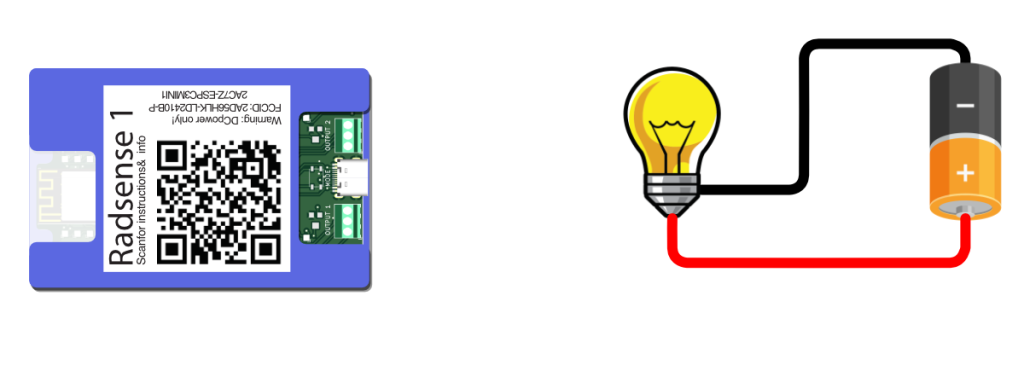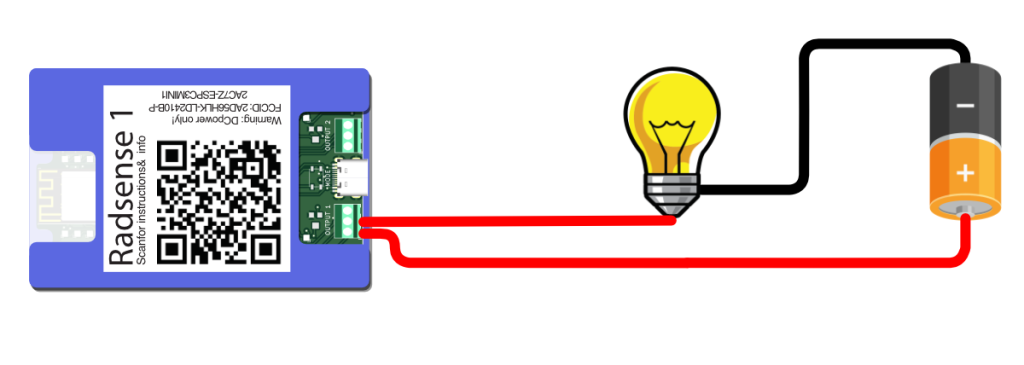Connecting to different devices
Lets start off with a warning: the device is made for DC power only. Never connect AC power (as you’ll find in your wall sockets) to the device as that can kill you and destroy the device. If you do not know the difference, please read up before connecting anything to the device.
The RadSense 1 has two relays that can either make or break a commection. Each relay has three screw terminals. These are not marked on the device, but can be seen in the image below. If you have ever used relays before, you’ll recognise this. The left connection on each terminal is NO (Normally Open), the middle is COM (Common) and the right is NC (Normally Closed).

Let’s start with a simple example: controlling a small light. Start from a working circuit with a power source and a light bulb like this.

Next, you want to break the circuit by cutting the red wire in two. Be sure to disconnect the light before cutting the wire. Never work with live wires! Connect the wire ends to the RadSense 1 device. One end to the middle screw terminal (COM) and the other to the lower terminal (NO) of Output 1. Give the wire a light tug to make sure you tightened the screw well. Don’t overtighten though as this may destroy the screw terminal.

Attribution: Battery & Bulb Vectors by Vecteezy.
Whenever anyone moves within the detection range, the light bulb will turn on. The same goes for any other low voltage DC circuit. Now what if you want to opposite effect? That something is turned on, but turns off when you approach it?
Say you are making a Halloween experience where more light turns off the closer you get to the target, you’ll want to use the “Sticky Mode” and connect your light from COM to NC. Insert one wire into the COM terminal and use the supplied screwdriver to tighten it. Then connect the other part of the cut wire to the NC (Normally Closed) connection. If the wire is connected to the NC terminal, the light will normally be on. When a person moves into the detection zone, the relay triggers to turn the light off since that opens the relay and breakes the connection.
Make sure that the light you are connecting does not pull more than 1A at 30 VDC. If we use a 12V lamp as an example, this means that the lamp must be 12 watts or less (Volt * Amp = Watts). Exceeding these limits may cause damage to the device and the relay to permanently remain stuck in either on or off state.